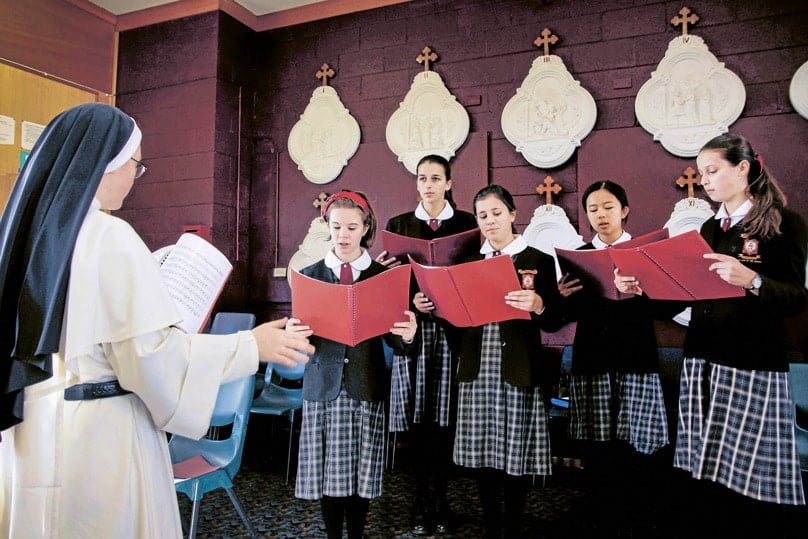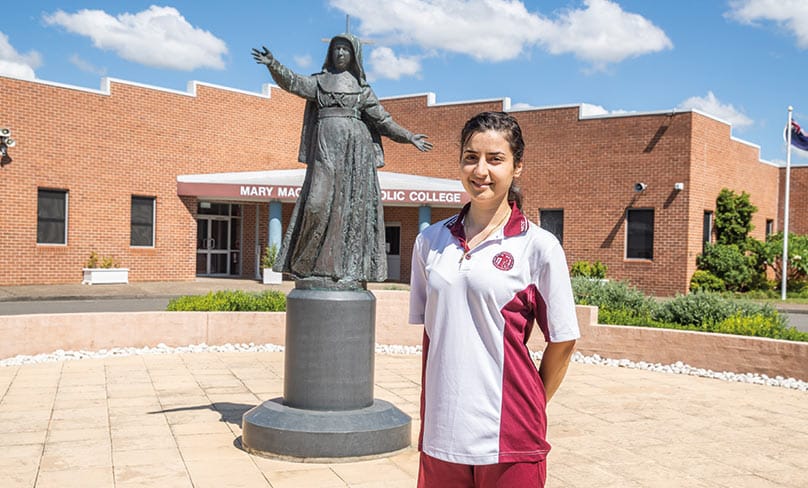
The Catholic community has a long and valued tradition of faith-based mission and service delivery in Australia by providing hospital care, outreach, welfare and school education for two centuries. It’s one of the unique aspects of our history and diversity in this country.
In fact, the first Catholic school was established in Parramatta 200 years ago this October – with the bicentenary of Catholic education being celebrated nationally next year.
there is a strong argument for public funding of Catholic and other non-government schools
For over 140 years, Catholic schools received little or no government funding to support this work, until 1962 when the local bishop closed the Catholic primary schools in Goulburn to protest the need for government funding for school amenities. While not wholly successful, the now-infamous Goulburn schools strike, brought the issue of fair funding to the fore, and signaled the start of formalised and recurrent funding arrangements for non-government schools.

From a purely economic perspective, there is a strong argument for public funding of Catholic and other non-government schools. In the case of the Catholic sector – which is the largest single provider of non-government schooling in Australia educating one in five students – the taxpayer saves around $3.7 billion annually because of parent and private contributions towards their children’s education. Catholic school communities also contribute nearly 90 per cent of the cost of capital works to build and maintain schools, which equates to another $1.3 billion in savings to the public purse.
Economics aside, the most compelling argument for Catholic schooling is supporting parents’ right to a faith-based education for their children. That’s not to say that governments don’t have a critical role to play in ensuring a high standard of curriculum and oversight of financial and government regulatory requirements across all sectors, but it would be a travesty if our aim in Australian education were to roll out a homogenised, cookie-cutter system of schools.

Fair and equitable funding is at the crux of the issue for affordable school choice, but it’s a complex one that is often misunderstood, not only by policy makers, but by those on all sides of the debate. A recent ‘analysis’ by the ABC attempted to demonstrate that Catholic schools in New South Wales were redistributing allocated government funding away from schools in rural and remote areas to schools in metropolitan Sydney.
The problem with this type of analysis is that it doesn’t take into account that the amount of funding allocated to non-government schools is based on an arbitrary and moveable measure of what parents should be expected to pay. It doesn’t factor into the equation other issues affecting affordable school choice such as housing stress, financial hardship, the number of children in a family, economies of scale for larger versus smaller schools, learning and teaching needs, and a range of other variable factors.
the mission of Catholic schools has been to serve students from disadvantaged communities
Recognising the limitations of the way non-government school funding is calculated, the government and the National Schools Resourcing Board enables school systems to redistribute funding according to their deeper understanding of their local contexts, families and school needs.
The ABC’s analysis that the full allocation of government funding is somehow an ‘entitlement’ for a particular school is simply wrong and attacks the integrity of Catholic education. It overlooks other funding measures that support school choice such as the Choice and Affordability Fund. It also begs the question, why aren’t state education system, who have a similar capacity to redistribute funding, not subjected to the same level of scrutiny?

Since our earliest beginnings the mission of Catholic schools has been to serve students from disadvantaged communities, which is demonstrated by the data. In regional and remote New South Wales, Catholic schools receive substantially more funding than students in metropolitan areas and pay less in school fees, which acknowledges the particular challenges of the school communities in these areas.

At the same time, for Catholic education to continue to offer a universal system of schools, alongside a well-funded public school system, we need to ensure that school fees are affordable and meet reasonable expectations for parents.
Until government funding measures are revised in such a way as to reflect these concerns, then non-government schools need to maintain some flexibility to redistribute funding in a way that best promotes choice and affordability. Otherwise, we are limiting school choice to only some groups in the community, or we risk not having any choice at all.
Jacinta Collins is a Former Senator and the current Executive Director for the National Catholic Education Commission
Related Stories:
